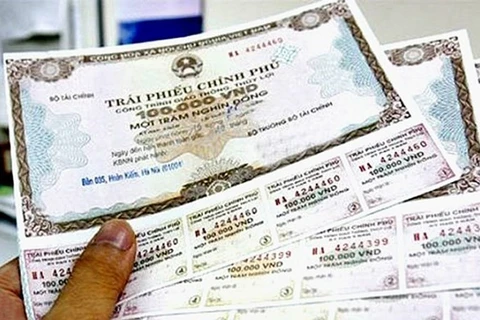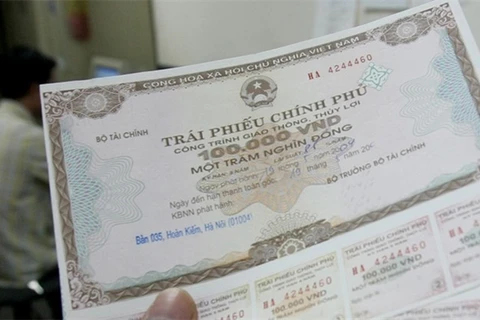 Vietnam’s Government bond segment contracted 7.8 percent quarter-on-quarter at the end of June to reach 50.1 billion USD, accounting for 86.2 percent of the country’s total bond stock. (Photo: baodautu.vn)
Vietnam’s Government bond segment contracted 7.8 percent quarter-on-quarter at the end of June to reach 50.1 billion USD, accounting for 86.2 percent of the country’s total bond stock. (Photo: baodautu.vn) Hanoi (VNS/VNA) - The improvement of global investment sentiment and financial conditions has provided a much-needed lift for local currency bond markets in emerging East Asia, including Vietnam, despite risks from the COVID-19 pandemic, according to the latest issue of the Asian Development Bank’s (ADB) Asia Bond Monitor.
Government bond yields in most emerging East Asian markets declined from June 15 to September 11 on the back of accommodative monetary policies and weakening growth across the region. Meanwhile, improving sentiment has led to gains in equity markets and a narrowing of credit spreads, with most regional currencies strengthening against the dollar.
Local currency bonds outstanding in emerging East Asia reached 17.2 trillion USD at the end of June, up 5 percent from March this year and 15.5 percent higher than in June 2019.
The report showed that Vietnam’s local currency bond market decreased by 1.7 percent at the end of June this year to reach $58.2 billion, after posting 10.4 percent quarterly growth in the first quarter. This is mainly due to lower outstanding debt in the Government area, even as the corporate bond stock increased.
Vietnam’s Government bond segment contracted 7.8 percent quarter-on-quarter at the end of June to reach 50.1 billion USD, accounting for 86.2 percent of the country’s total bond stock. Corporate bonds, however, surged by 65.6 percent in the second quarter compared to the first, reaching 8 billion USD.
On an annual basis, growth in corporate bonds stood at 76 percent at the end of June this year.
ADB Chief Economist Yasuyuki Sawada said governments in the region have been agile in dealing with the impact of the COVID-19 pandemic through a wide range of policy responses, including monetary easing and fiscal stimulus.
“It is crucial that governments and central banks maintain accommodative monetary policy stances and ensure sufficient liquidity to support financial stability and economic recovery,” Sawada said.
Emerging East Asia consists of China, Hong Kong of China, Indonesia, the Republic of Korea, Malaysia, the Philippines, Singapore, Thailand and Vietnam.
As a share of regional gross domestic product, emerging East Asia’s local currency bonds outstanding climbed to 91.6 percent at the end of June, from 87.8 percent in March, mainly due to the large amount of funding needed to fight the pandemic and its impact.
Bond issuance in the region hit 2 trillion USD in the second quarter, up by 21.3 percent from the first quarter this year. China remained home to the region’s largest bond market, accounting for 76.6 percent of the region’s total bond stock as of the end of June.
The region’s government bonds outstanding reached 10.5 trillion USD at the end of June and made up 60.8 percent of the region’s aggregate bond stock. Corporate bonds, meanwhile, totalled 6.7 trillion USD.
The ADB said that a worsening and prolonged COVID-19 pandemic that could dent the region’s economic outlook. Developing Asia will contract by 0.7 percent this year, its first contraction in six decades. Growth will rebound to 6.8 percent in 2021.
Other risk factors include potential social unrest due to the pandemic’s economic impact, as well as continuing tensions between China and the US, ADB experts said./.
VNA






















